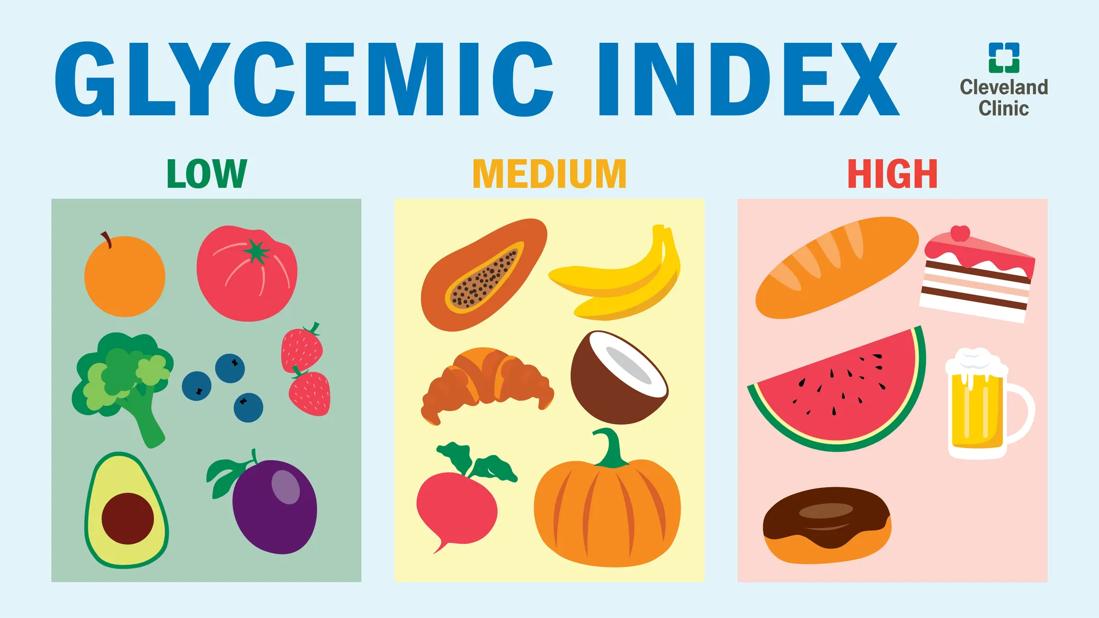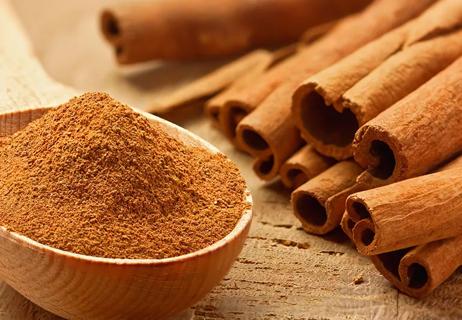You can use this index to help identify which foods can cause wild swings in your blood sugar

Growing up, you were probably told to limit sweets. That meant not overdoing it on Halloween candy or having that extra bowl of sugary breakfast cereal.
Advertisement
Cleveland Clinic is a non-profit academic medical center. Advertising on our site helps support our mission. We do not endorse non-Cleveland Clinic products or services. Policy
While the adult-you might be tempted to throw caution to the wind and eat whatever you want, maintaining a healthy diet is more important than ever.
One way of looking at a healthy diet is considering where foods fall on the glycemic index.
“The glycemic index is used to classify foods that contain carbohydrates, their potential for raising blood sugar and how quickly they raise your blood sugar,” says registered dietitian Anthony DiMarino, RD, LD.
DiMarino explains how the glycemic index can help you choose healthy foods.
The glycemic index measures how quickly foods that contain carbohydrates can increase your blood sugar. The scale is 0 to 100. Foods can fall into one of three categories:
Essentially, the glycemic index shows that not everything that contains the exact same amount of grams of carbs will behave the same way in your body. You can measure how your body responds to a cup of orange juice versus how it reacts to other food items: a banana, 25 grams of candy or 25 grams of whole-grain bread.
The reason for these differences comes from how carbs react in your body. Simple carbohydrates — like, say, the sugars found in soda and sweet desserts — are broken down faster than the more complex carbohydrates found in some vegetables and whole-grain foods. As a result, your blood sugar spikes and then falls rapidly. Over time, healthcare providers believe these constant surges and retreats play a part in people becoming insulin resistant.
Advertisement
When it comes to how to calculate glycemic index numbers, doctors have measured only certain foods or classes of foods (foods like meats, fats and oil don’t contain carbs).
To determine glycemic index numbers, they observe how healthy people’s blood sugar levels change after ingesting carb-containing foods. By measuring subsequent blood sugar levels — and comparing them to a baseline — they can determine where a food falls on a scale of 0 to 100, where 100 represents pure glucose and 0 is a food with no sugar at all.
Use this glycemic index food chart as a starting point.
Foods with a number that’s 55 or less include:
Foods that have a range of 56-69 on the glycemic index include:
Foods that have a glycemic index number of 70 or more include:
The University of Sydney has a useful glycemic index of foods database you can also search.
DiMarino cautions that determining the glycemic index ratings for individual foods is an imperfect science. Factors like how food is processed or prepared play a role.
For example, one study of instant oatmeal shows that it had a glycemic index of 79, which is in the high range. Yet steel-cut rolled oats have a glycemic index of 55, which puts it in a low glycemic index.
Different versions of the same food will also vary due to ingredients. For example, yogurt that’s marketed for kids is going to taste delicious because it has a lot of sugar or artificial sweeteners, like high fructose corn syrup — versus plain Greek, regular-fat yogurt.
“They might have very similar amounts of carbs, but the glycemic index is very different because of the number of proteins and fats and the quality and quantity of the sugar that’s in there,” clarifies DiMarino.
How much you eat of a certain carb-heavy food can also have an effect. For example, a small sip or two of soda won’t have as big an impact on your body as a large portion of whole-grain rice — even though the latter is generally perceived as healthier.
As with many diets, DiMarino stresses that “moderation” is key, as is striking a balance between eating low and high glycemic index foods.
“We’re all human,” he empathizes. “It’s very difficult for most of us to try to eliminate any one kind of food if we like it. So, it’s all about having portions that are reasonable and not going overboard.”
Advertisement
Advertisement
Learn more about our editorial process.
Advertisement

This approach is all about eating foods that don’t spike your blood sugar quickly

Even a short walk can make a positive difference

Some studies find benefits for people with diabetes

Designed to lower your blood pressure, this eating plan focuses on heart-healthy foods like whole grains, fruits and vegetables

Leucine is an amino acid that helps you build muscle — it’s found in both plant and animal protein

Most kids get enough protein in a regular diet — too much can have side effects

Risks of this restrictive eating plan include digestive issues, heart disease and cancer

Cucumbers, celery and (of course) watermelon are among foods with high water content

If you’re feeling short of breath, sleep can be tough — propping yourself up or sleeping on your side may help

If you fear the unknown or find yourself needing reassurance often, you may identify with this attachment style

If you’re looking to boost your gut health, it’s better to get fiber from whole foods